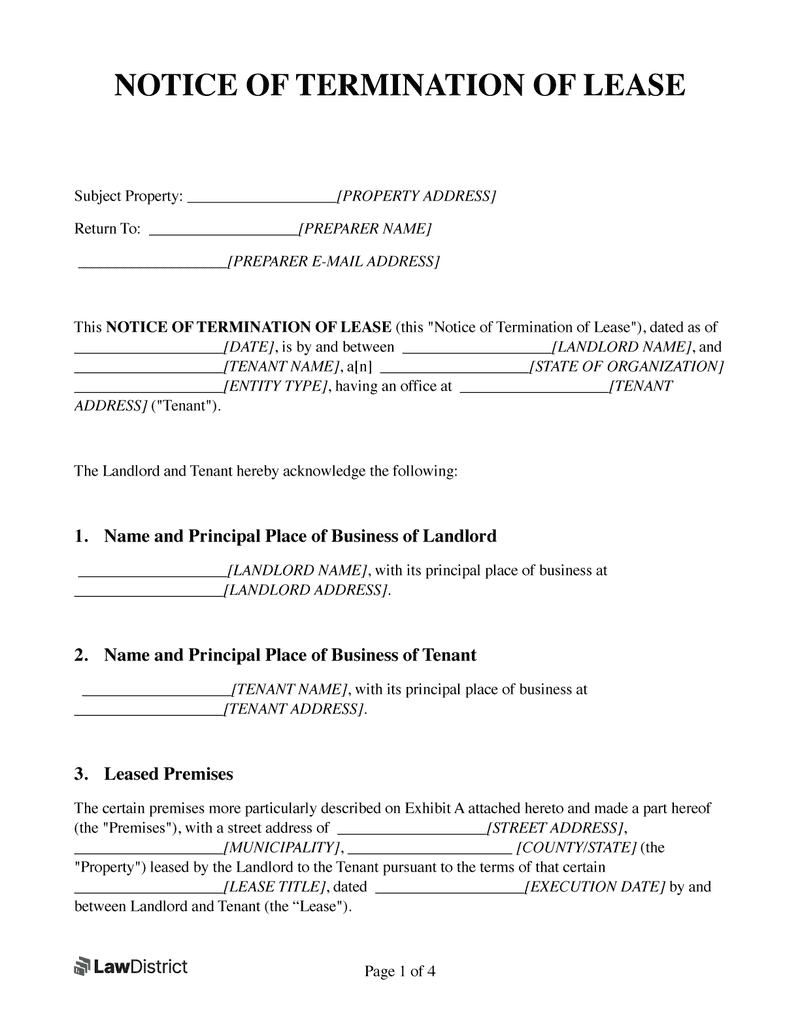
Navigating Lease Termination Conditions: A Comprehensive Guide
Lease termination conditions are a critical aspect of the tenant-landlord relationship, outlining the terms and processes involved when either party decides to end the lease agreement. Understanding these conditions is essential for a smooth transition and avoiding potential disputes. Let’s delve into the key elements and considerations surrounding lease termination conditions.
1. Clarity in Lease Agreement Terms
The foundation of lease termination conditions lies within the lease agreement itself. Clear and unambiguous language is crucial in outlining the circumstances under which either party can terminate the lease. Both tenants and landlords should thoroughly review and understand these terms before entering into the lease agreement.
2. Notice Period Requirements
One of the primary components of lease termination conditions is the notice period. Tenants are typically required to provide advance notice to landlords before terminating the lease, and vice versa. Understanding the specific notice period stipulated in the lease agreement is essential for both parties to avoid misunderstandings and legal complications.
3. Reasons for Termination
Lease termination conditions often specify the acceptable reasons for ending the lease. These reasons may include the expiration of the lease term, mutual agreement between the parties, or specific circumstances such as a job relocation or a change in health. Familiarizing oneself with these conditions helps tenants and landlords navigate the termination process smoothly.
4. Compliance with Local Laws and Regulations
Lease termination conditions should align with local rental laws and regulations. Different jurisdictions may have specific requirements regarding notice periods, allowable reasons for termination, and other related aspects. Both tenants and landlords should be aware of and adhere to these legal considerations to ensure a legally sound termination process.
5. Handling Security Deposits
Lease termination often involves the return of the tenant’s security deposit. The conditions for refunding the deposit, any deductions for damages beyond normal wear and tear, and the timeframe for returning the deposit should be clearly outlined in the lease agreement. This transparency helps prevent disputes over security deposit returns.
6. Property Inspection Protocols
Some lease agreements include provisions for property inspections during the lease termination process. Landlords may conduct inspections to assess the condition of the property before the tenant moves out. Understanding the protocols and expectations for property inspections is crucial for both tenants and landlords to address any potential issues promptly.
7. Responsibilities for Cleaning and Repairs
Lease termination conditions often outline the responsibilities for cleaning and making repairs. Tenants are typically required to return the property in a reasonably clean and well-maintained condition, excluding normal wear and tear. Clear communication and understanding of these expectations contribute to a smooth lease termination process.
8. Handling Unforeseen Circumstances
Lease termination conditions should account for unforeseen circumstances that may arise during the termination process. This could include situations such as the death of a tenant, property damage due to natural disasters, or other unexpected events. Having provisions to address these circumstances helps all parties navigate complex situations.
9. Communication Protocols
Effective communication is a key element in lease termination conditions. Both tenants and landlords should adhere to specified communication protocols during the termination process. This may include written notices, official letters, or other agreed-upon methods of communication to ensure clarity and documentation of the termination.
10. Seeking Legal Advice when Needed
In complex situations or when disputes arise, seeking legal advice becomes essential. Whether for tenants understanding their rights or landlords ensuring legal compliance, consulting with legal professionals can provide valuable guidance and help navigate any challenges associated with lease termination conditions.
Conclusion: A Well-Defined Path for Lease Termination
In conclusion, understanding and adhering to lease termination conditions is crucial for both tenants and landlords. Clarity in the lease agreement terms, compliance with local laws, and effective communication are essential elements for a smooth termination process. By navigating these conditions thoughtfully, both parties can ensure a fair and transparent conclusion to the leasing relationship.
For more insights into lease termination conditions and best practices, visit Lease Termination Conditions.
